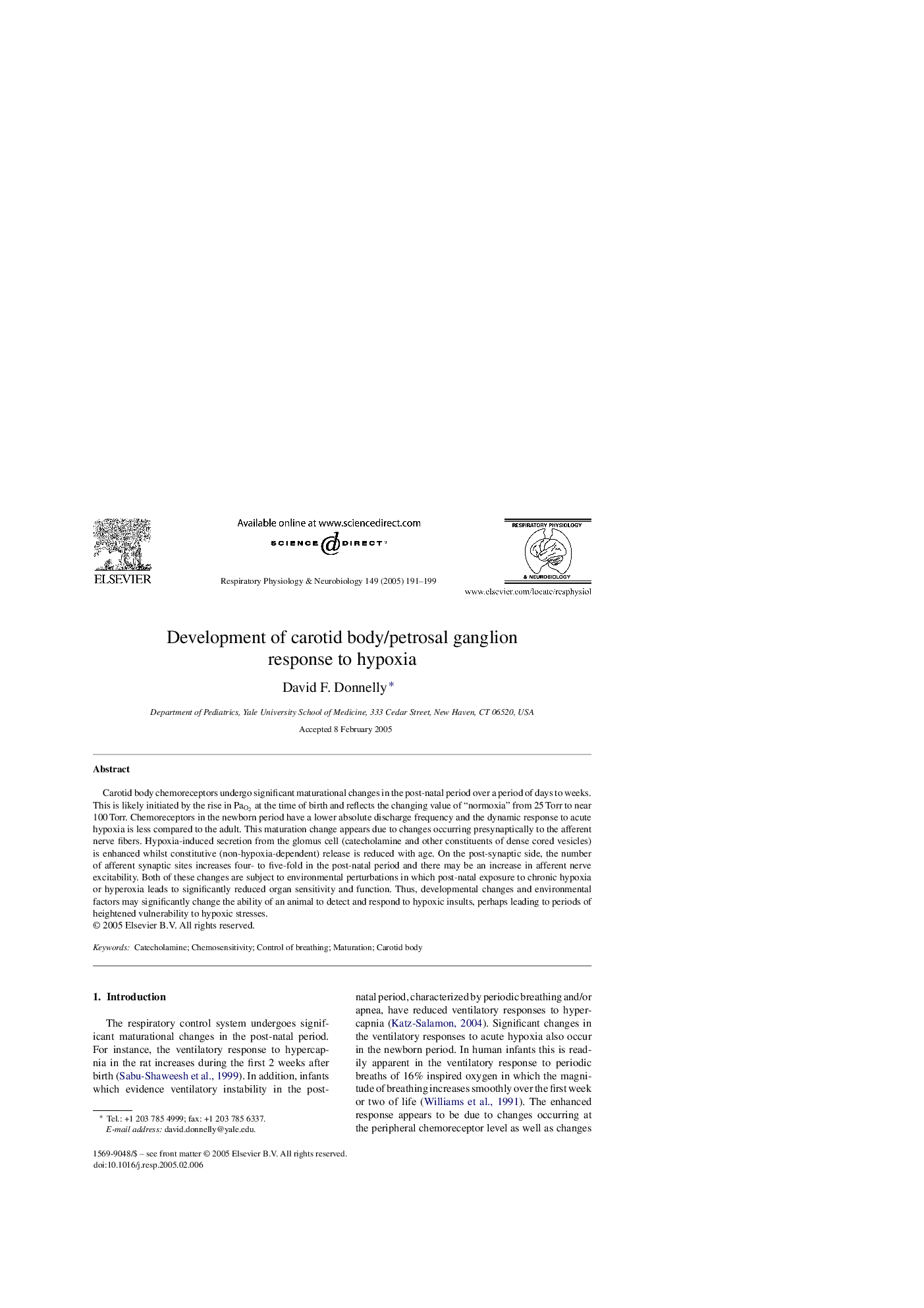| Article ID | Journal | Published Year | Pages | File Type |
|---|---|---|---|---|
| 9152192 | Respiratory Physiology & Neurobiology | 2005 | 9 Pages |
Abstract
Carotid body chemoreceptors undergo significant maturational changes in the post-natal period over a period of days to weeks. This is likely initiated by the rise in PaO2 at the time of birth and reflects the changing value of “normoxia” from 25Â Torr to near 100Â Torr. Chemoreceptors in the newborn period have a lower absolute discharge frequency and the dynamic response to acute hypoxia is less compared to the adult. This maturation change appears due to changes occurring presynaptically to the afferent nerve fibers. Hypoxia-induced secretion from the glomus cell (catecholamine and other constituents of dense cored vesicles) is enhanced whilst constitutive (non-hypoxia-dependent) release is reduced with age. On the post-synaptic side, the number of afferent synaptic sites increases four- to five-fold in the post-natal period and there may be an increase in afferent nerve excitability. Both of these changes are subject to environmental perturbations in which post-natal exposure to chronic hypoxia or hyperoxia leads to significantly reduced organ sensitivity and function. Thus, developmental changes and environmental factors may significantly change the ability of an animal to detect and respond to hypoxic insults, perhaps leading to periods of heightened vulnerability to hypoxic stresses.
Related Topics
Life Sciences
Biochemistry, Genetics and Molecular Biology
Physiology
Authors
David F. Donnelly,
